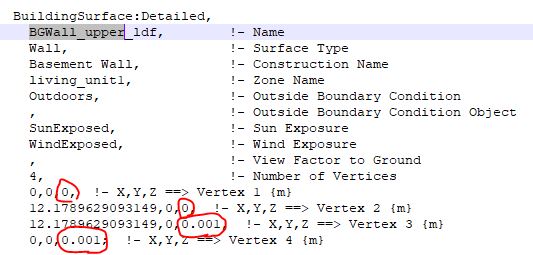First time here? Check out the Help page!
 | 1 | initial version |
Regarding version: I believe they are available (at least the 2018 IECC models) in v8.6 at the following link https://www.energycodes.gov/development/residential/iecc_models
Regarding conversion: I encountered the issue you are describing when converting the Single Family models to v9.0 from v8.0 (I took the intermittent step of converting from 8.0 to 8.9 before converting that to 9.0 on the advice of a colleague). I realized that this is caused by the 4 upper basement wall surfaces, which seem to be low enough in height (0.001m) to be considered a degenerate surface - I assumed this gets deleted during the simulation resulting in a zone that is not completely enclosed. Deleting these BGWall_upper_... surfaces from the model and then dropping the floor above (and the lower Z vertices of the walls above) from 0.001m to 0m resolved the issue.

 | 2 | No.2 Revision |
Regarding version: I believe they are available (at least the 2018 IECC models) in v8.6 at the following link https://www.energycodes.gov/development/residential/iecc_models
Regarding conversion: I encountered the issue you are describing when converting the Single Family models to v9.0 from v8.0 (I took the intermittent step of converting from 8.0 to 8.9 before converting that to 9.0 on the advice of a colleague). I realized that this is caused by the 4 upper basement wall surfaces, which seem to be low enough in height (0.001m) to be considered a degenerate surface - I assumed this gets deleted during the simulation resulting in a zone that is not completely enclosed. Deleting these BGWall_upper_... surfaces from the model and then dropping the floor above (and the lower Z vertices of the walls above) from 0.001m to 0m resolved the issue.issue.
I'm not exactly sure what causes this and actually have not tried to see if this issue exists in the original (non-converted) file.

